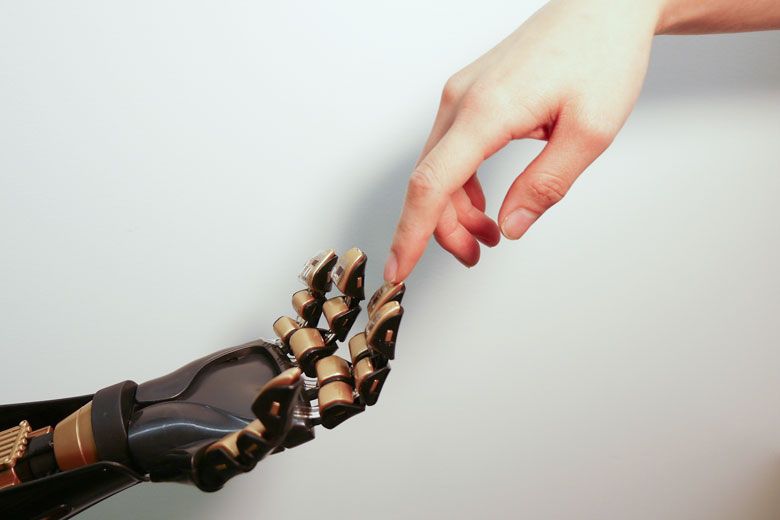Prosthetics Could Soon Have a Sense of Touch
A technology suprisingly inspired by Darth Vader
/https://tf-cmsv2-smithsonianmag-media.s3.amazonaws.com/filer/68/d7/68d732f0-481b-4bf6-b848-c9d1573e7a1e/42-18654356.jpg)
Even though prosthetics can become part of their wearer’s physical identity, they’ve always been missing something real limbs have: A sense of touch. Now, that could change thanks to artificial skin that actually has the ability to feel, Alexandra Ossola reports for Popular Science.
Researchers at Stanford University have created artificial skin that can transmit neurological signals when it experiences pressure, writes Ossola. The skin uses carbon nanotubes that translate pressure into electric signals. The signals can then be linked up to a mouse’s brain to match frequencies that would usually be generated by touch.
The skin is flexible and can sense pressure from a firm handshake to a light tap of the fingers.
The artificial skin has a surprising origin, writes Beth Mole for Ars Technica. Benjamin Tee, a co-author of the paper announcing the discovery, tells Mole that the skin was inspired by none other than Luke Skywalker. Mole explains:
Restoring feeling in amputees and people with paralysis could help them carry out normal activities, such as cooking, playing contact sports, and, you know, fighting the empire. Tee, a Star Wars fan, told Ars that he has wanted to make artificial skin ever since watching The Empire Strikes Back, in which Luke Skywalker gets a prosthetic arm after being injured in a fight with Darth Vader.

The new skin isn’t perfect: It only senses pressure, not texture or temperature. The team’s next step is to develop sensors that can replicate different textures and sensing mechanisms.
“We have a lot of work to take this from experimental to practical applications,” said the team’s leader, Zhenan Bao, in a press release. “But after spending many years in this work, I now see a clear path where we can take our artificial skin.”
Bao and her team will have to hurry: They’re not the only ones developing ways to make faux limbs feel. Earlier this year, DARPA announced that it was able to transmit sensation through a prosthetic hand to a 28-year-old quadriplegic. Perhaps sensory prostheses will soon have their day.
/https://tf-cmsv2-smithsonianmag-media.s3.amazonaws.com/accounts/headshot/erin.png)
/https://tf-cmsv2-smithsonianmag-media.s3.amazonaws.com/accounts/headshot/erin.png)